Our abundant birdlife in Kaikoura woudn't be complete without the numerous other varieties of seabirds below which include Shags, Prions, Penguins, Gulls and Terns.
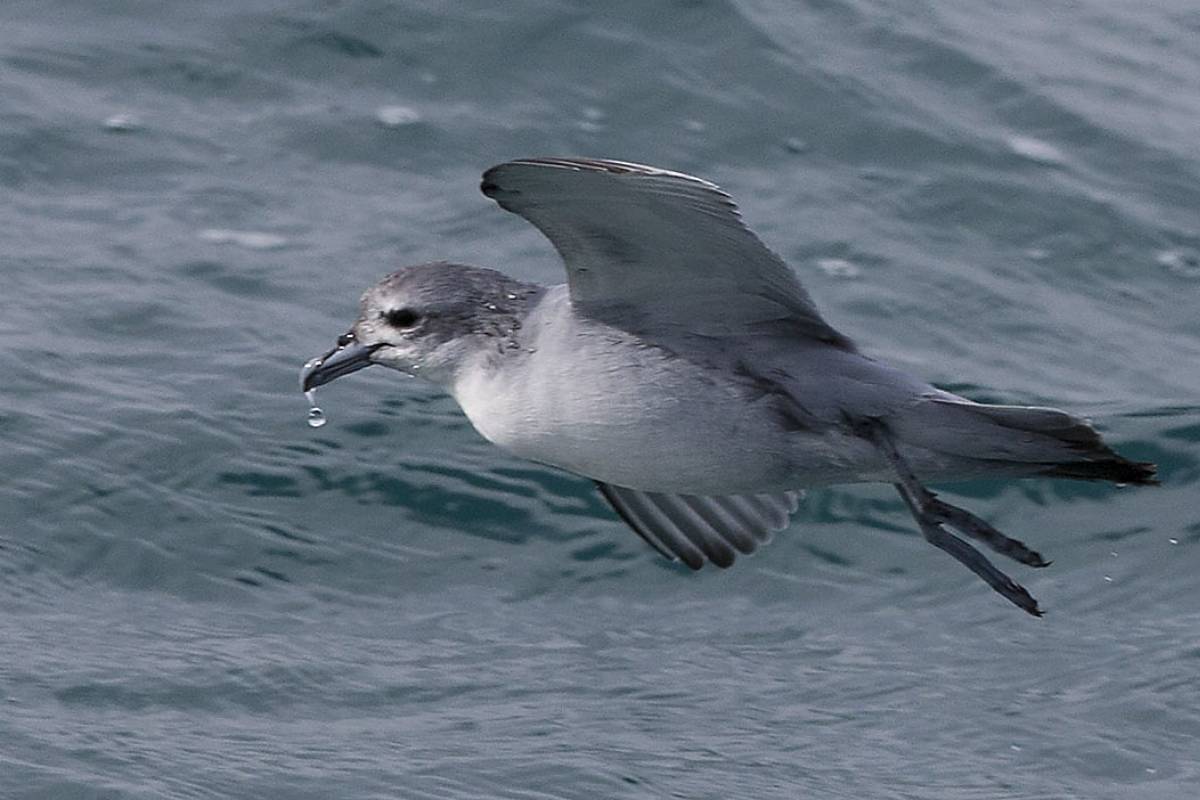
Fairy Prion
The chances are that most prions seen off Kaikoura will be fairy prions.
The fairy prion (Pachyptila turtur) is one of the most abundant seabirds found in New Zealand waters. It's generally seen more than five miles offshore. but in Kaikoura it can be seen much closer in certain conditions. They are small silver-grey bird weighing only 120 grams, about a third the size of the red-billed gull, with a distinctive black "W" pattern across their back. Colonies of tens of thousands breed in burrows on Stephen's Islands and other islands in Cook Strait. The closet colony to Kaikoura is at Motunau Island, about 70 miles south of Kaikoura. They feed on small krill/shrimp from the water's surface.
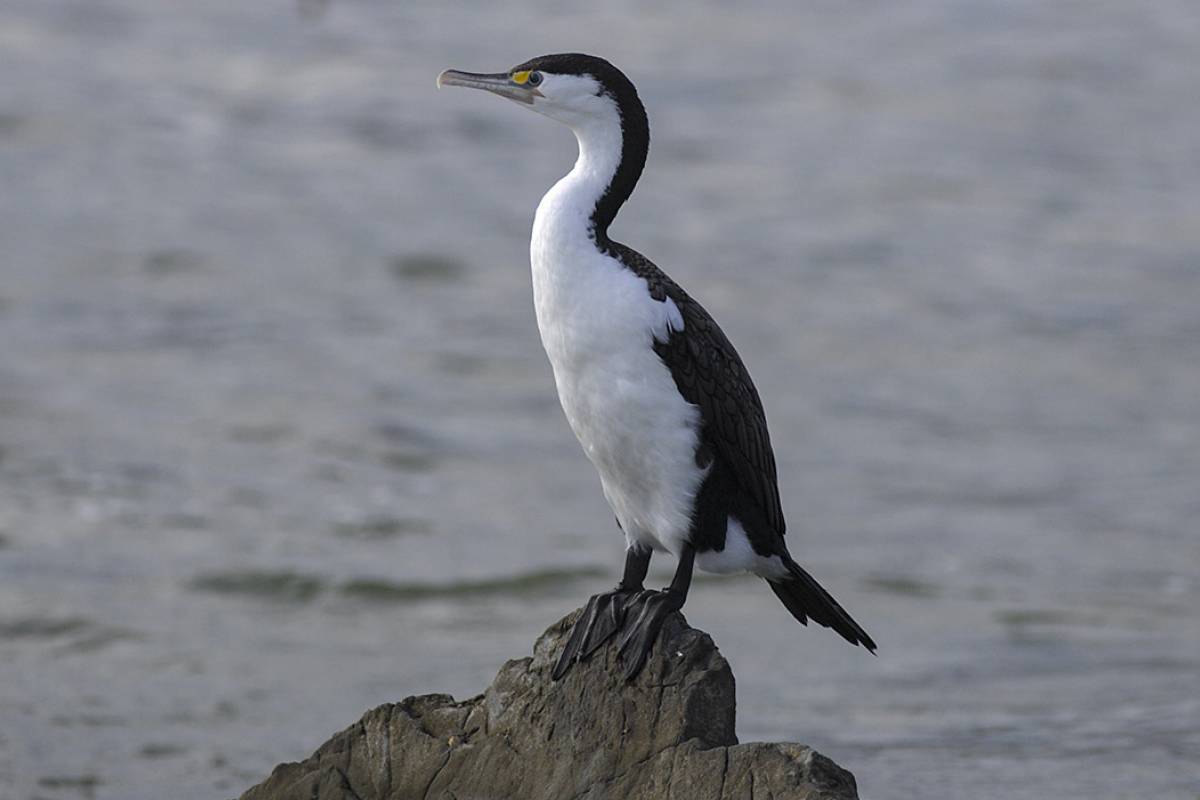
Pied Shag
Pied shags are a distinctive and common bird along the Kaikoura Coast.
The pied shag (Phalacrocorax varius) is almost as large as the black shag. It's a distinctively-coloured large black and white seabird, with a large and distinctive hooked beak. Despite being almost an entirely coastal-feeding species, pied shags nest inland at Kaikoura at Lake Rotorua. They're a social species and groups of birds can be seen resting on beaches, although they are generally solitary when feeding. They feed on coastal fish such as mullet and flounders and also paddle crabs, and dive below the surface to feed to depths of 20 metres. They rarely venture more than a kilometre or so offshore. The pied shag breeds throughout New Zealand with colonies in macrocarpa and pohutakawa trees. Like the black shag, pied shags were persecuted by fishermen, being seen as competitors for fish.
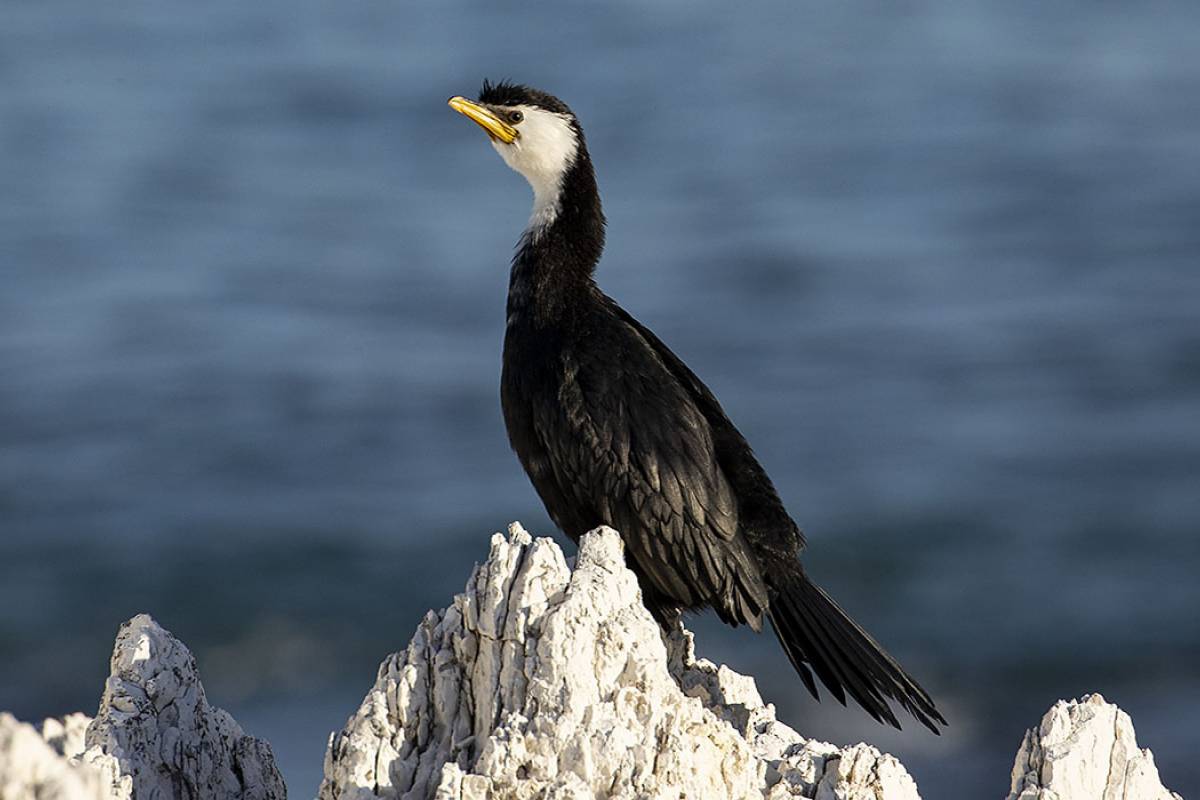
Little Shag
Seen along the Kaikoura coastline throughout the year sitting on rocks or feeding in rocky shallows.
The little shag (Phalacrocorax melanoleucos) is only half the size of the pied shag and black shag. It's a polymorphic species, meaning there are multiple distinct forms within the one species: one that's total black, one white-throated, one pied. Each looks like either a miniature pied or black shag, but the little shag is easily distinguished by its smaller size. Numbers of little shags have increased dramatically in recent years, and they're found throughout New Zealand, Australia and Indonesia. Most colonies are in discrete inland locations, with birds flying down to coastal areas to feed on small bullies around rock pools. They're rarely seen offshore.
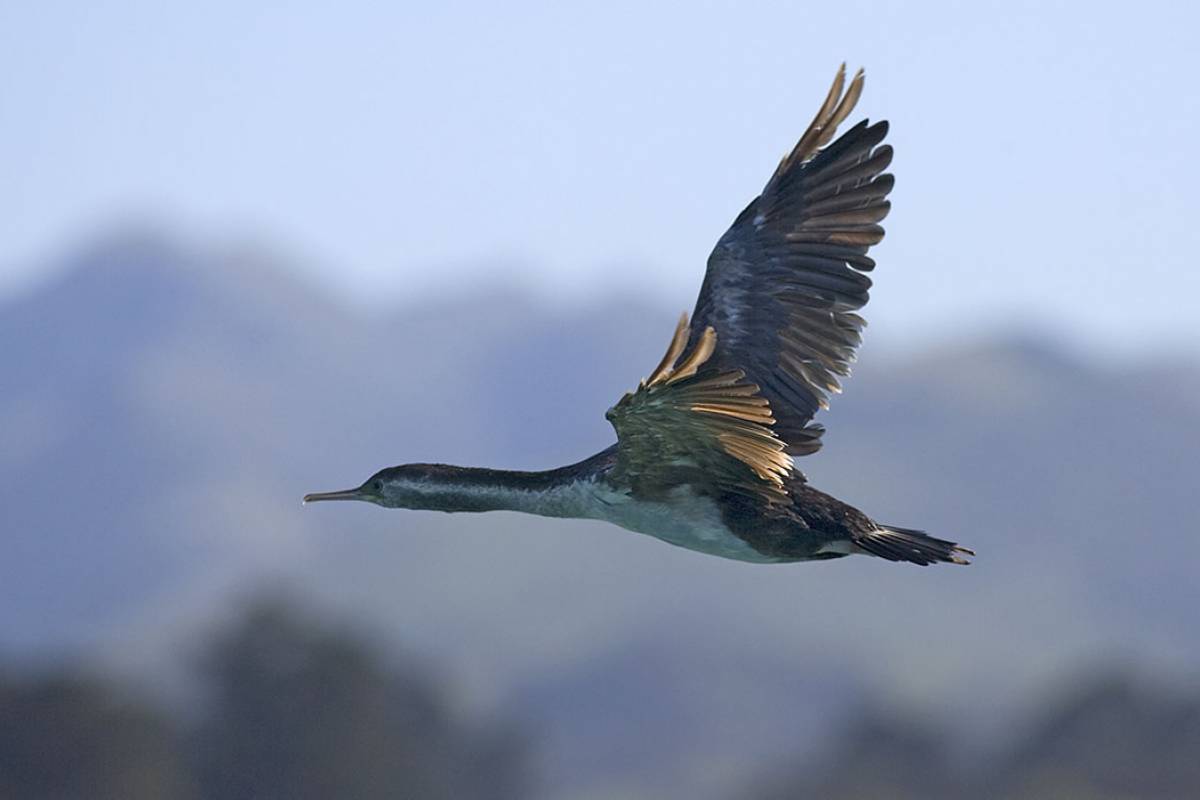
Spotted shag
Spotted shags are only found in New Zealand waters. Large colonies of thousands of birds breed on Banks Peninsula and smaller colonies are found in the Marlborough Sounds.
Generally only small flocks of spotted shags are seen along the Kaikoura Coast, however a colony of juvenile birds in their hundreds can be found on Barney's Rock in the autumn months. This is when hundreds of spotted shags are seen flying in impressive "V" formations along the Kaikoura Coastline and off the Kaikoura Peninsula on transit. A smaller colony of spotted shags roosts on rocks next to the New Wharf on the Kaikoura Peninsula. Unlike the black, pied, and little shags, the spotted shag is only a coastal species. Large colonies of thousands of birds breed on Banks Peninsula, and smaller colonies are found in the Marlborough Sounds. Spotted shags nest on sheer rock faces. The adults develop elaborate crests when courtship is taking place. Spotted shags can often be seen feeding in large flocks.
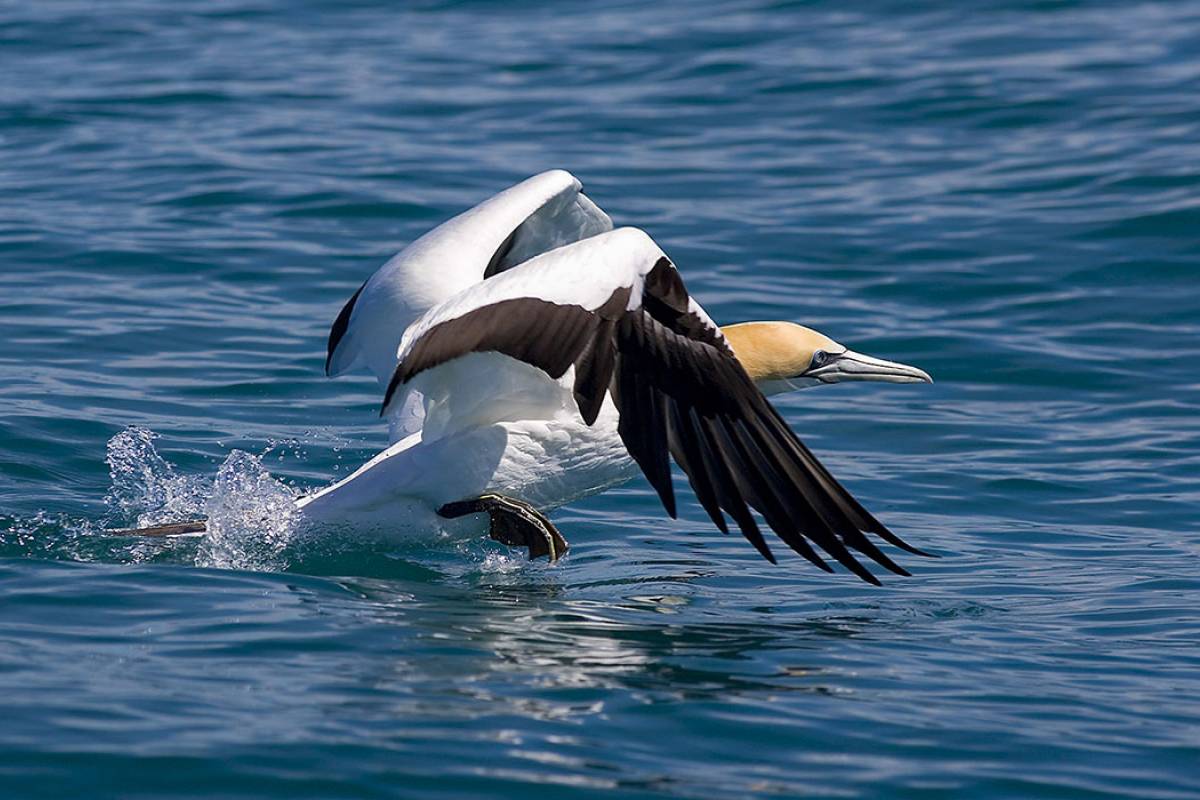
Australian Gannet
Adult birds do not migrate spending spring and summer round their breeding colonies before dispersing to coastal waters around New Zealand for winter.
Gannets are highly distinctive seabirds with a 2m wingspan, black tipped wings and a yellow head. Juvenile birds are speckled brown and may take up to 5 years to obtain adult plumage. The average lifespan of a gannet is between 25 to 40 years and they are believed to be one of the longest lived seabirds. The Australasian gannet (Morus serrator) is also known locally as “takapu”. They typically breed in large colonies around New Zealand and Australia with the largest colony at Cape Kidnappers, Napier. The closest breeding colony to Kaikoura is at Farewell Spit, where unusually the birds nest on shell banks at sea level. Gannets mate for life with a single egg laid between mid-September to mid-December. The egg is incubated by both parents and both adults are kept busy feeding the chick.
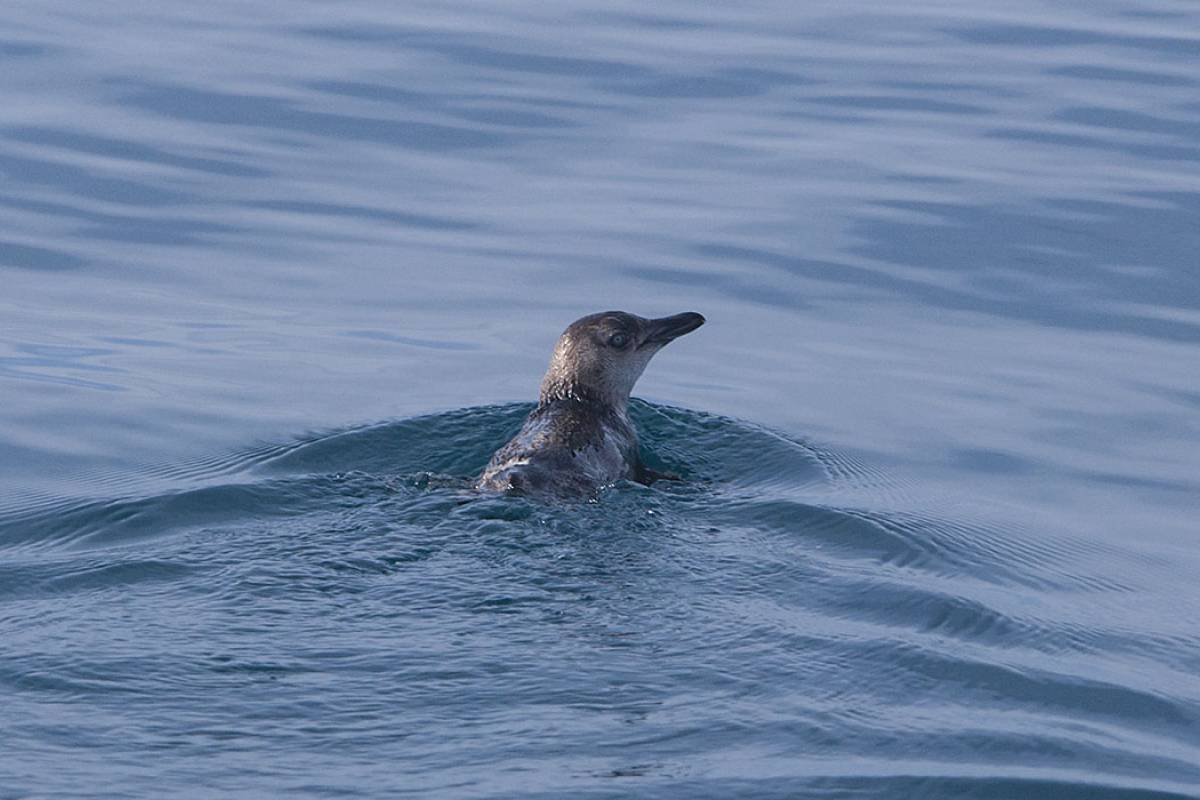
Blue penguin
The blue penguin, also known as the little penguin, is the world’s smallest penguin measuring around 25cm - 30cm tall and only 1kg in weight.
Blue penguins (Eudyptula minor) forage out to sea during the day hunting for small fish, crustaceans and squid, then return back to land under the cover of darkness. They can travel up to 70km from the colony, but no more than 25km offshore. They can reach speeds of up to 6km/hr, but usual speed ranges from 2-4km/hr. Penguins reach breeding age around 2-3 years old. Two eggs are laid from August to November in burrows. The adults will take it in turns to stay with the chick guarding it until it's 3 weeks old, then both adults will go out to sea to forage.

Black-backed Gull
These birds are opportunistic scavengers and are highly adaptable living in cities, coastal areas, rivers and lakes.

Red-billed Gull
Red-billed gulls are also known as silver gulls in Australia and are sighted on the bird tours on a daily basis.
Red-billed gulls breed on the Kaikoura Peninsula. Here, these birds have been extensively studied since the 1960s with research on their social organisation and particular habits. Birds with coloured bands on their legs are frequently seen both on land and at sea around Kaikoura. The gulls breed from early October to late December, laying one to five eggs. Both sexes incubate the eggs and provide food for the chicks. The young fledge around 37 days old, but remain dependent on their parents for a further three weeks. Birds vacate their breeding grounds in early autumn, although most birds remain within 400km of their breeding colony. Research on banded birds in Kaikoura has shown that some birds have been seen as far away as Auckland and Invercargill.

White-fronted Tern
White-fronted terns are the most common terns in New Zealand.
Their name is derived from a white band between the black cap and bill. The birds are plunge diving birds feeding almost exclusively on small fish, such as pilchards and smelt, which larger birds chase towards the surface. The white-fronted tern breeds around New Zealand and on islands in the Bass Strait between Australia and Tasmania. They nest from October to January in large colonies nesting on sandy or rocky beaches, shingle beaches or rocky stacks. They lay one or two eggs, with the young fledging between 4-5 weeks old. White-fronted terns can frequently be observed being targeted by skua, which chase them to get them to drop their food or to regurgitate their last meal. They can live up to 18 years.

Black-fronted Tern
The black-fronted tern is a small grey tern commonly seen on braided rivers, estuaries and harbours of the eastern South Island.

Arctic Skua
They are often seen in New Zealand coastal waters, although it is unusual to see aggregations of more than 10 birds at once.
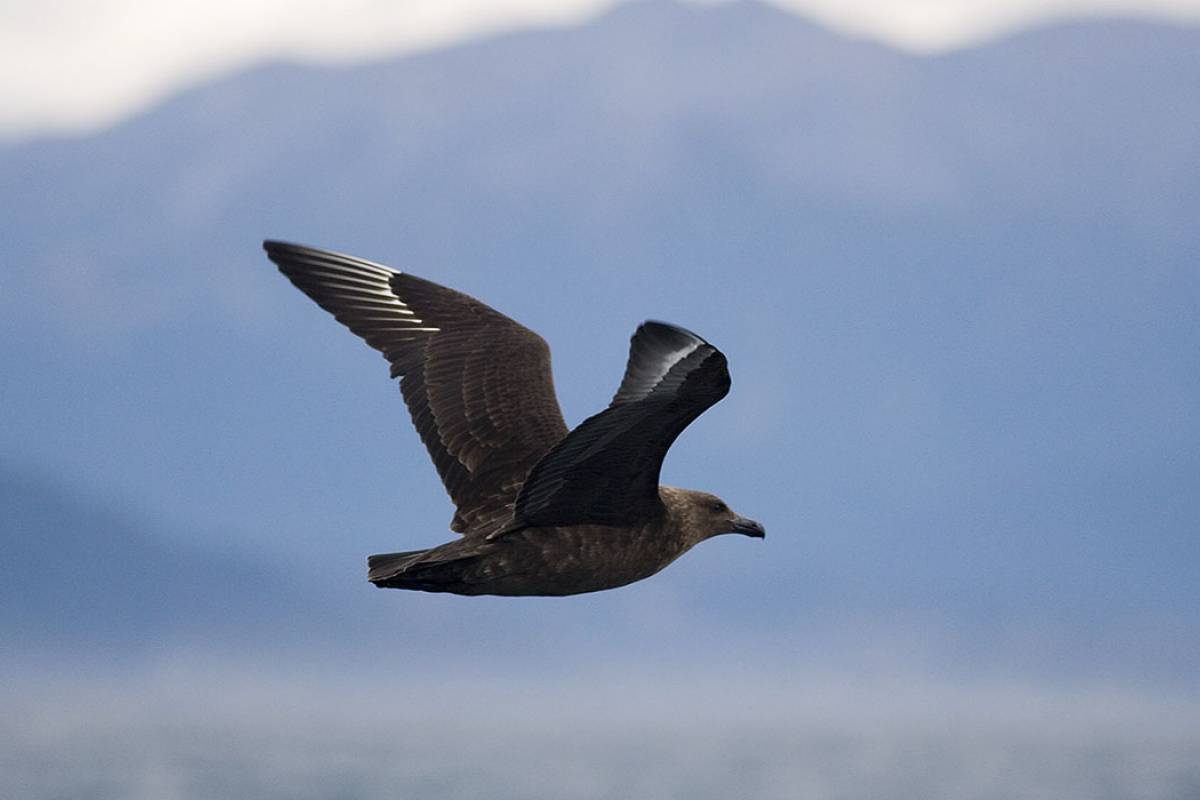
Brown Skua
The brown skua is a large seabird that breeds in the subantarctic and Antarctic zones and moves further north when not breeding.
The brown skua is a subantarctic breeder and is only occasionally sighted in Kaikoura. It's the heaviest of the skua species and the females It is 52–64 cm in length, 126–160 cm in wingspan and has a body mass of 1.2–2.18 kg. The brown skua is a subantarctic breeder and is only occasionally sighted here in Kaikoura. It’s the heaviest of the skua species and the females are larger than the males which is the complete opposite for gulls, albatrosses and petrels. It is 52-64cm in length, 126 - 160cm in wingspan and has a body mass of 1.2 - 2.2kg.
Recent Bird Sightings
With around 150 species of birds recorded here so far, Kaikoura is one of New Zealand's top birding destinations. The wonderful array of seabirds just offshore are the jewel in the crown with five varieties of Great Albatross, nine varieties of the smaller Lesser Albatross, seven varieties of Shearwaters, fourteen Petrel varieties, and several other seabird varies such as Shags, Prions, Penguins, Gulls and Terns.